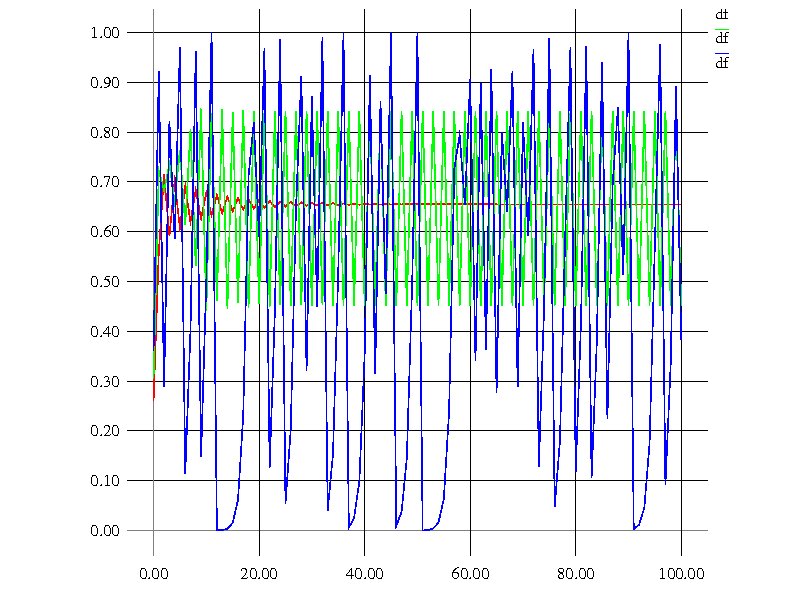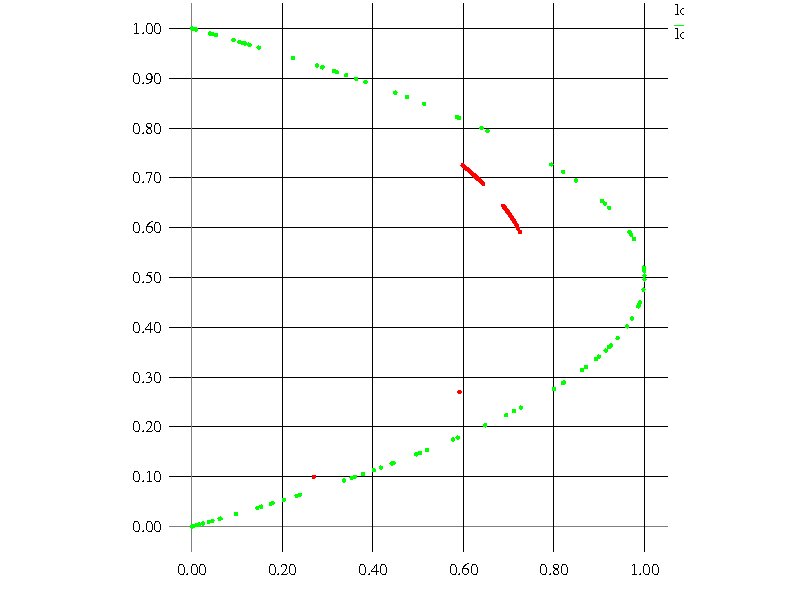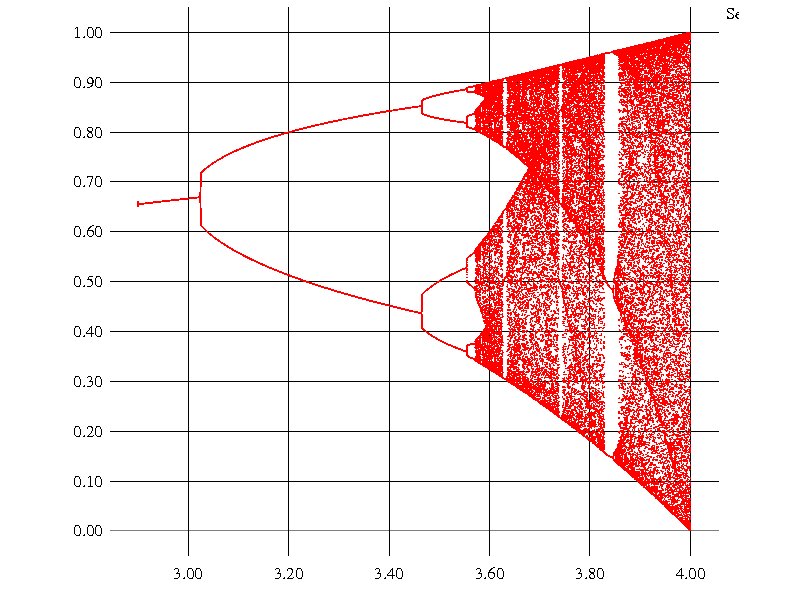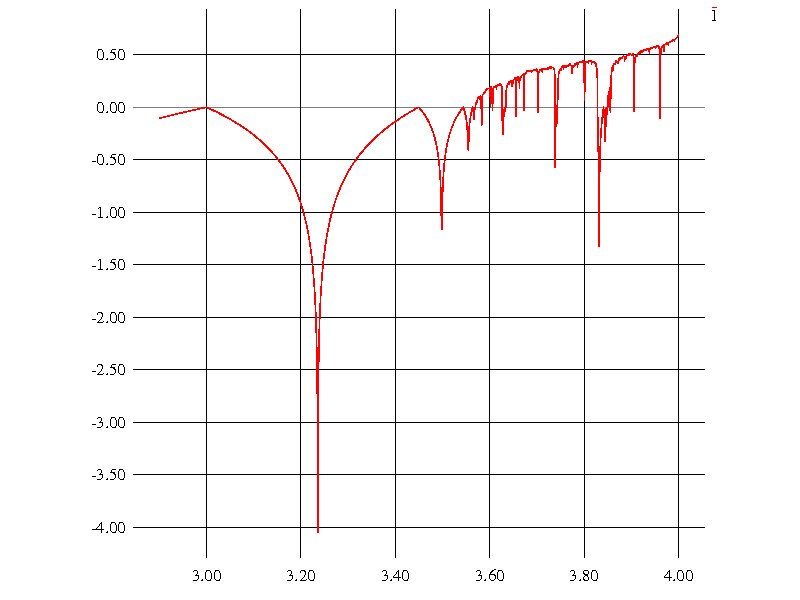/*
Logistic Equation
dot{n} = r*(1.0-n/K)*n
*/
#include
#include
#include
#define T_END 1000
#define r 0.1
#define K 50.0
#define h 0.1 /*h 分割数*/
double FUNC(); /* 関数の例*/
main()
{
int j; /*j;step number*/
double nn=0.0, n=100.0;
double nt=0.0,t=0.0;
double k1=0.0, k2=0.0,k3=0.0,k4=0.0;
for(j=0;j<=T_END;j++)
{
k1 = h*FUNC(t,n);
k2 = h*FUNC(t+0.5*h,n+0.5*k1);
k3 = h*FUNC(t+0.5*h,n+0.5*k2);
k4 = h*FUNC(t+h,n+k3);
nn = n + 0.16666667*(k1+2.0*k2+2.0*k3+k4);
nt = t + h;
printf("%d %f\n",j,n);
n = nn;
t = nt;
}
return 0;
}
/*関数の例*/
double FUNC(double t, double n)
{
return (r*(1.0-n/K)*n);
}
出力結果

この微分方程式には解析解が存在し、それに収束する。 しかし離散時間体系にすると、次のような変なことが起こる。
/*
離散時間体系:
x_{n+1}=a*(1.0-x)*x
*/
#include
#include
#include
#define a 4.0
main()
{
int j; /*j;step number*/
double x=0.1,nx=0.0;
for(j=0;j<=100;j++)
{
nx=a*(1.0-x)*x;
printf("%f %f\n",nx, x);
/*printf("%d %f\n",j, nx);*/
x=nx;
}
return 0;
}
出力結果

TIME EVOLUTION(aの値によって、収束(a=2.9)、周期的(a=3.4)、一見ランダム(a=4.0)なように)

NXとX(RED: a=3.0, GREEN: a=4.0) 特にa=4の場合、時間発展は一見ランダムのようでしたが、規則性が存在するということが分かります。
/* Logistic Map OUTPUT Command ./a.out | xgrpah -nl -p */ #include#include main(void) { double nx,c; double x=0.65; for(c = 2.9 ; c <= 4.0; c += 0.00001) { nx = c*x*(1. - x ); printf("%f %f\n", c , nx ); x = fmod( nx ,1.); } return 0; }
出力結果

aの値を大きくしている。
その他カオスを特徴づける方法として、Liapunov Exponentが知られている。 その指数が正であるならば、「カオス」であると言われている。
/*
Liapunov Exponent
\lambda=\lim_{n\to \infty}\frac{1}{n}\sum_{j=0}^{n-1}\log |f'(x_j)|
EXAMPLE:
ロジスティック方程式のリアプノフ指数
*/
#include
#include
/*初期値設定*/
#define STEP 100000
/*関数宣言*/
double f(double,double);
double g(double,double);
main()
{
int j;
double x=0.1,nx,u;
double liap,h,total;
for(h=2.9;h<=4.0;h+=0.001)
{
for(j=0;j<=STEP-1;j++)
{
nx=f(x,h);
u=fabs(g(nx,h));
total +=log(u);
liap = total/STEP;
x=nx;
}
printf("%f %f\n",h, liap);
nx=0.0;
u=0.0;
total=0.0;
liap=0.0;
}
return 0;
}
/*FUNCTION */
double f(double x,double h)
{
return( h*x*(1.0-x) );
}
/*1st derivative */
double g(double x,double h)
{
return( h*(1.0-2.0*x) );
}
出力結果

Back to C Language

